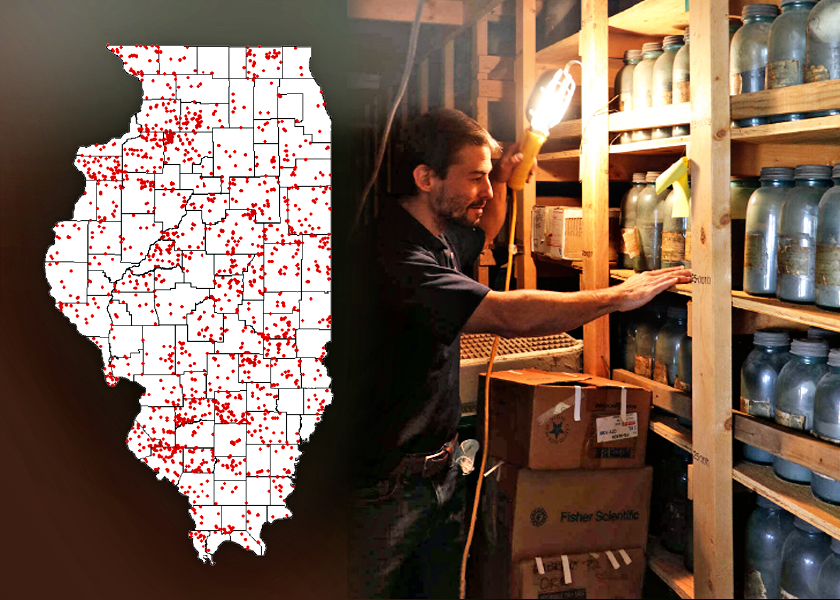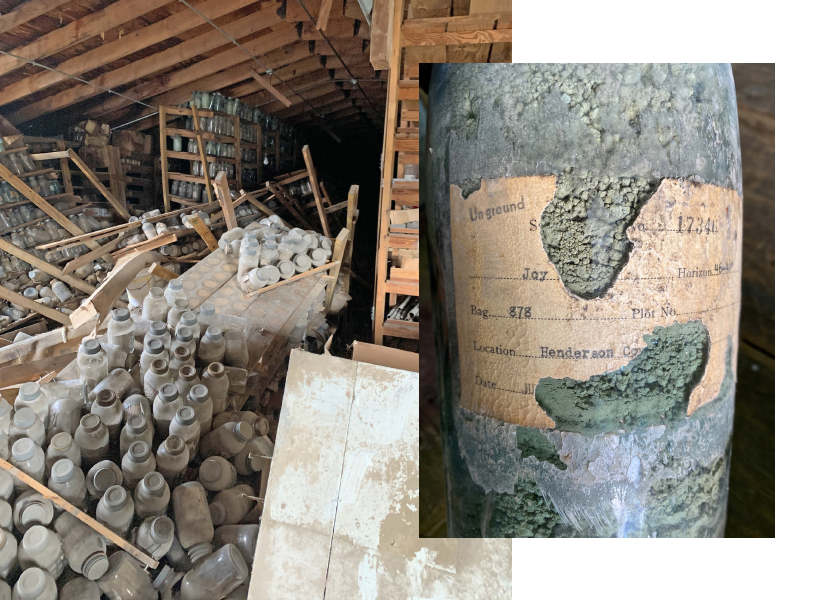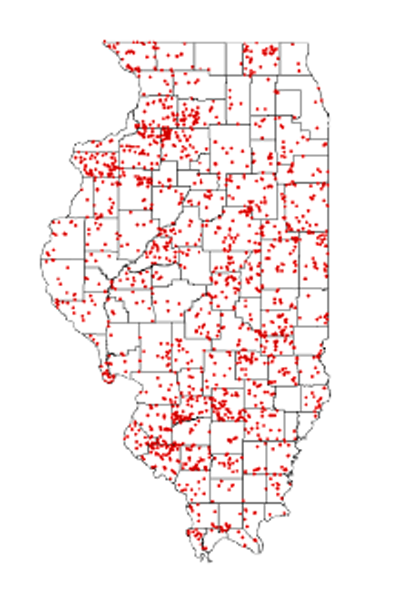World’s Largest Soil Archive Brings History to Life

In 2018, a barn on the University of Illinois Urbana-Champaign (UIUC) main campus was set to be demolished. On demo day, Andrew Margenot, associate professor of soil sciences, walked into the dusty, dilapidated barn to size up the job at hand. That’s when he stumbled upon a once-in-a-lifetime discovery.
Nestled within the confines of the decaying barn walls sat 8,000 mason jars filled with Illinois soil dating back to 1862. At 450 sampling locations spanning 21 million crop acres, it’s the world’s largest soil archive.
This unique find is likely the oldest collection, as few soil archives exceed 40 years.
“I went in there thinking I might find a few soil samples from a professor before me. But as I walked through the barn, I found collapsed wooden aisles that previously held the hundreds of jars on the ground — some broken, others in perfect condition,” Margenot says.
Upon closer inspection, he discovered the labels on the jars provided a road map. Each label included the sample date (down to the day), sample county and soil classification.

History Comes Alive
Illinois was among the first states to begin mapping soil, specifically Adams County, where the first sample was collected in 1899. However, among the UIUC soil archive, Margenot found a jar that preceded the first mapped Illinois sample by 37 years. That’s when the shock set in.
“I realized we must be looking at the state collection USDA used to derive the soil maps we use today,” he says. “There was also soil from the Morrow Plots, so it was a pretty big find.”

provides a road map to resample in the future to learn how the soil has changed.
The Morrow Plots, established in 1876 by UIUC Professor George Espy Morrow, are the world’s second-oldest continuous field experiments, after the Rothamstead Research Plots in the United Kingdom that date back to 1843. The Morrow Plots focus on crop rotation, inputs and fertility.
“For a soil nerd like me, it was a treasure. I didn’t sleep for a few nights because I was so excited about this detailed find,” Margenot says.
He spent the next three years cataloging the 8,000 samples, now stored in a barn 150 yards from the original barn. Fast forward to today, Margenot is ready to resample the original locations for insights into the state’s soil resource base for improvements in soil fertility and conservation.
“With these samples, we’re looking at the difference between anything you can imagine — thickness of topsoil, soil erosion, the amount of carbon and nutrients from the past 120 years of collections,” Margenot says.
He expects the data will benefit farmers, engineers and municipal planners, and could reveal interesting stories to tell about erosion, climate and sustainability.
“We want to continue this public mission that began in the 1800s by resampling the locations from the archive. To do that, we need permission from landowners to sample their soil,” Margenot says. “We will do all the work; we just need permission.” 
Permitting landowners can expect the team to use a 1.5" diameter probe to pull a soil sample at a 3' depth from three points across a 10' to 15' area. They will then share the soil data with landowners before stripping identifying location data from the samples and entering them into a database for analysis and comparison with the old soils.
From there, the database will be made available for researchers, landowners and other stakeholders.
“With this find, we have an opportunity to understand our state’s soils to an extent that no other part of the world will have. We need the public’s help to continue this legacy of learning about our soils, thereby providing farmers with more knowledge to use on-farm,” Margenot says.







